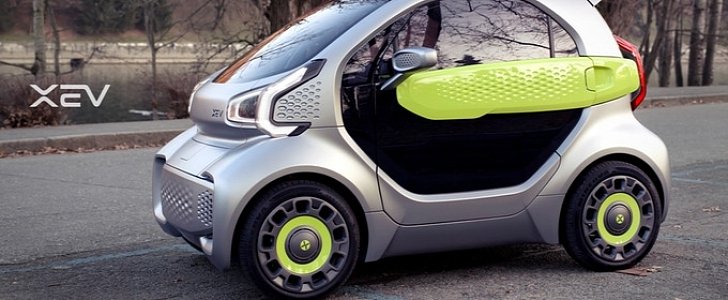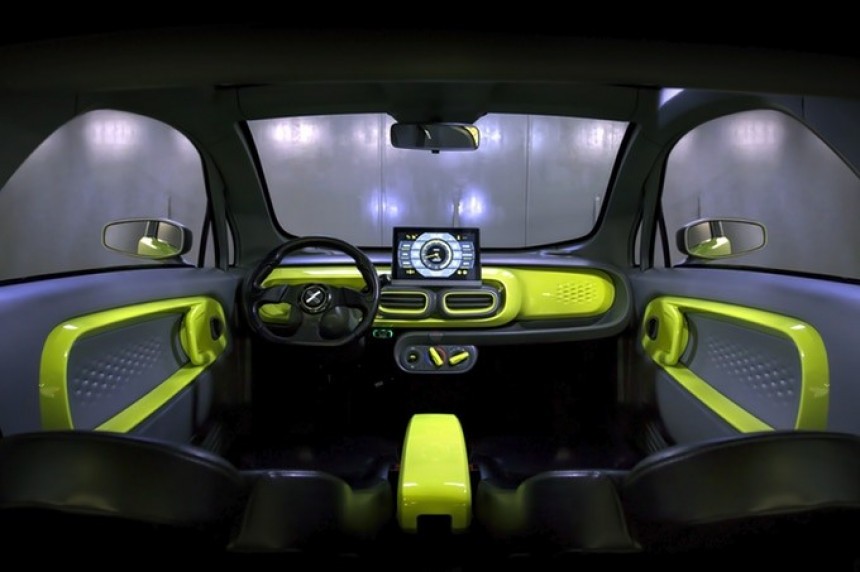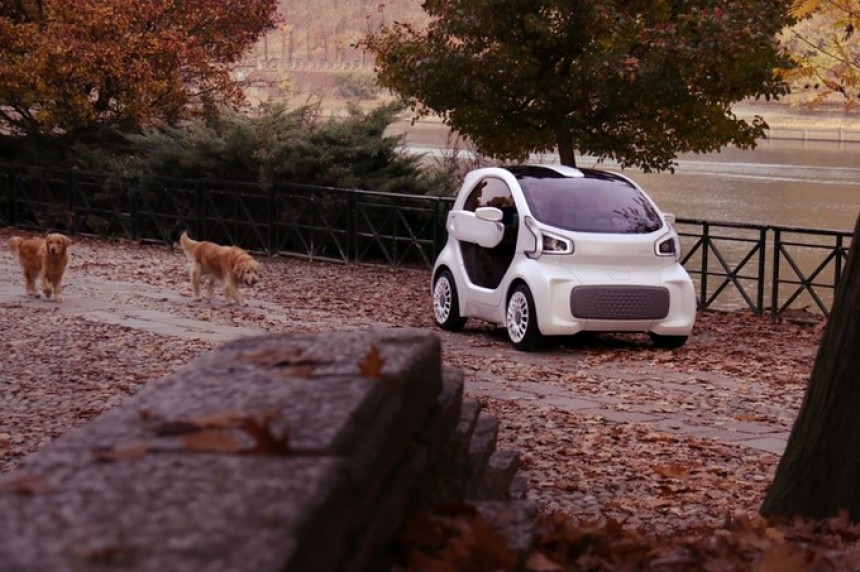As more automakers are introducing electric cars into their lineup, let’s hear it from a small Italy-based startup that has been working on a small EV since 2016. The only reason you haven’t heard of XEV is probably because progress has been slow, for a very good reason: they’re working on the world’s first 3D-printed car.
3D-print technology has been used in the auto industry before, but never to this extent. XEV plans to make the entire car this way, effectively lowering the number of components to 57 and thus the weight of the vehicle. In the process, it’s also improving range and lessening the impact on the environment for the entire manufacturing process.
This wonder-car that sounds like the solution to all the problems is called YoYo (it was also known as LSEV at one point). You probably guessed it from the name: the YoYo is a tiny vehicle that looks very much like a Smart Fortwo, but is actually smaller than that. It’s also more effective, XEV argues.
XEV is now crowdfunding on Kickstarter, hoping to raise $554,486 to make YoYo happen. Though small and apparently difficult to be taken seriously as a personal vehicle, YoYo is meant as an alternative mobility solution for crowded cities. It’s small on the outside, which makes it ideal for busy urban environments, but spacious on the inside. The maker says it can comfortably sit a ballerina and a professional rugby player alike, as long as they don’t have kids. It even has an actual trunk where you can put 2 carry-ons or all the bags from your shopping spree, XEV says.
By using 3D-print technology on YoYo, XEV is able to reduce the manufacturing cost considerably, while making it possible to guarantee endless customization options. In other words, YoYo is the kind of car that can grow with you – just not physically. XEV says it will be making updates and upgrades to the car based on customer feedback, and it is considering the possibility to retrofit these parts onto the base model.
“Keyless entry, electric mirrors and a large touchscreen for the infotainment and vehicle information are standard,” XEV says. Everything else can be switched up according to the owner’s preferences.
YoYo could potentially start rolling down European streets in 2020, if the campaign secures funding. Prices would start at the equivalent of $10,000, an amount that includes peace of mind knowing you’re driving a car that has zero emissions and minimum carbon footprint.
By now, you’re probably thinking, “yes, but what’s the catch?” The catch is that the YoYo is not just small, but also on the slow side. XEV says it will be able to reach top speeds of 70 kph, which means its use will be limited exclusively to cities. It fits into the L7 vehicle category (the equivalent of NEV / neighborhood electric vehicles in the U.S.), which means it may look like a car but is not technically one.
If it’s any consolation, XEV estimates a range of about 150 km on a single charge, and the possibility to battery swap or charge at home using a wall outlet. Heck, given its diminutive size, you could even drive it into your living-room and park it there, if you live on the ground floor.
XEV is positive that such a small car is the answer to today’s drivers’ problems in traffic. The use of 3D-print technology and the outstanding design will also contribute to make the YoYo a solid competitor on the EV market – on the condition it secures funding.
“We wanted to get away from the aggressive styling that’s become so typical of modern car design as we just didn’t think it was right for the YoYo,” XEV says. “What we came up with was a fun, bold design that we feel strikes a great balance between a modern, new-technology aesthetic together with a character that is approachable and dependable. We think it suits a small car perfectly.”
XEV doesn’t say what, if any, safety tests have been conducted on the YoYo, but it claims using 3D-printed parts makes it much safer in case of an accident than a conventional car.
This wonder-car that sounds like the solution to all the problems is called YoYo (it was also known as LSEV at one point). You probably guessed it from the name: the YoYo is a tiny vehicle that looks very much like a Smart Fortwo, but is actually smaller than that. It’s also more effective, XEV argues.
XEV is now crowdfunding on Kickstarter, hoping to raise $554,486 to make YoYo happen. Though small and apparently difficult to be taken seriously as a personal vehicle, YoYo is meant as an alternative mobility solution for crowded cities. It’s small on the outside, which makes it ideal for busy urban environments, but spacious on the inside. The maker says it can comfortably sit a ballerina and a professional rugby player alike, as long as they don’t have kids. It even has an actual trunk where you can put 2 carry-ons or all the bags from your shopping spree, XEV says.
“Keyless entry, electric mirrors and a large touchscreen for the infotainment and vehicle information are standard,” XEV says. Everything else can be switched up according to the owner’s preferences.
YoYo could potentially start rolling down European streets in 2020, if the campaign secures funding. Prices would start at the equivalent of $10,000, an amount that includes peace of mind knowing you’re driving a car that has zero emissions and minimum carbon footprint.
By now, you’re probably thinking, “yes, but what’s the catch?” The catch is that the YoYo is not just small, but also on the slow side. XEV says it will be able to reach top speeds of 70 kph, which means its use will be limited exclusively to cities. It fits into the L7 vehicle category (the equivalent of NEV / neighborhood electric vehicles in the U.S.), which means it may look like a car but is not technically one.
If it’s any consolation, XEV estimates a range of about 150 km on a single charge, and the possibility to battery swap or charge at home using a wall outlet. Heck, given its diminutive size, you could even drive it into your living-room and park it there, if you live on the ground floor.
“We wanted to get away from the aggressive styling that’s become so typical of modern car design as we just didn’t think it was right for the YoYo,” XEV says. “What we came up with was a fun, bold design that we feel strikes a great balance between a modern, new-technology aesthetic together with a character that is approachable and dependable. We think it suits a small car perfectly.”
XEV doesn’t say what, if any, safety tests have been conducted on the YoYo, but it claims using 3D-printed parts makes it much safer in case of an accident than a conventional car.















